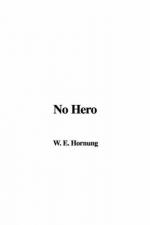|
This section contains 939 words (approx. 4 pages at 300 words per page) |

|
SOURCE: "Roguery in Recent Fiction: Raffles and Company," in The Literature of Roguery, Vol. II, Houghton, Mifflin and Company, 1907, pp. 515-21.
In the following excerpt, Chandler examines the characterization of Raffles.
The most popular literary rogue of recent times owes to the most popular of literary detectives his birth and characteristics. Hornung's Amateur Cracksman (1899), dedicated to Conan Doyle, betrays with its sequels, Raffles (1901) and A Thief in the Night (1905), the distinguishing traits of Sherlock Holmes. Raffles is secretive and taciturn, a non-professional who excels in ability those of the trade, and a gentleman when not engaged in business. He is gifted with analytic powers of no mean order. He has his fastidious specialities,—cricket and Sullivan cigarettes. His cleverness is heightened by contrast with the surprised stupidity of his associate, the narrator Bunny, who reflects Doyle's Dr. Watson. Raffles's exploits, like many of Sherlock Holmes's, are chronicled by...
|
This section contains 939 words (approx. 4 pages at 300 words per page) |

|


